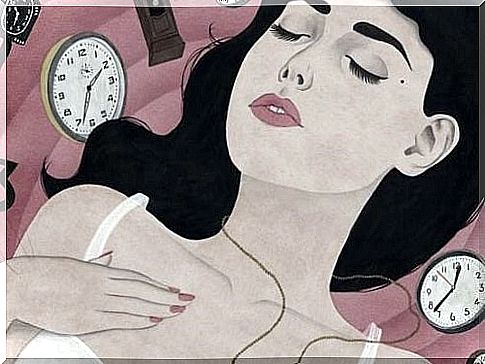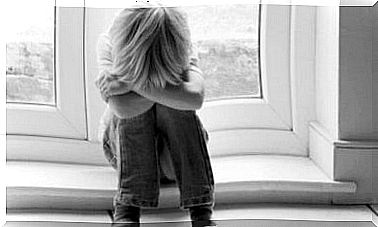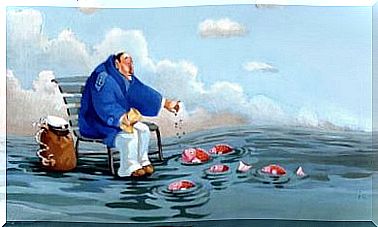5 Differences Between Sadness And Depression

Talking about psychology has become popular lately, but the way we talk about psychology is not always correct. We tend to talk about psychology and create inappropriate ideas about certain diseases. One of the classic examples of this is our difficulty in understanding differences between sadness and depression. Therefore, the use of the word “depression” in popular speech has led to confusion about the disease. In fact, it has even led to a bit of contempt.
The use of the word depression instead of sadness or vice versa causes many problems. Some people find it easier to say they are depressed, rather than sad. The first word sounds more technically or scientifically correct, and we tend to associate sadness with human weakness.
There are many differences between sadness and depression. The first and most important difference between these two states is that sadness is temporary. On the other hand, depression is a disease and it needs to be treated by professionals. For this reason, it is important to know the differences between the two.
1. Duration: A crucial factor
The duration of psychological phenomena is not something we can measure accurately. Despite this, it is a fact that the duration of the problem may lead to a more precise method of treatment. An emotion is by definition short-lived.
One of the biggest differences between sadness and depression is that the first is a transient feeling. However, depression is relatively chronic unless a psychologist remedies the problem. A person must continuously experience sadness for six months, according to diagnostic criteria, before a psychologist begins to suspect that there is depression in a patient.

2. Abuli: A crucial factor
Abuli is basically a lack of the ability, or resistance, to act. When a person is sad, they feel less motivated to perform their normal daily activities. Maybe abuli reduces your socializing, or you end up spending less time at work or performing tasks than you normally do. However, you are still relatively active.
A depressed person, on the other hand, is overcome by this discouragement. They ignore their obligations completely, and may begin to ignore the efforts of others to help them. They often talk about getting tired and that fatigue ends up reducing the number of activities they do during their day or week. Therefore, depression in clinical terms is very similar to what a person with anxiety disorder experiences.
3. The degree of isolation
Another of the major differences in sadness and depression is reflected in the degree of isolation that the person exhibits. It is normal for a sad person to seek out close relationships, to talk about how they are feeling. It is also normal for them to seek comfort in others, although they may also maintain a degree of social isolation. In that sense, it will depend on the individual personality and coping strategies.
However, a depressed person will constantly reject contact with others. A depressed person keeps their feelings to themselves. They do so even though they do not feel they are good at being alone and they actually prefer to spend time with others. But they do not seek help, and gradually they become isolated, even from their closest friends and family.

4. The functionality level
One factor that marks one of the major differences between sadness and depression is the person’s level of functionality. When a person feels sad, their condition only changes their daily habits a bit. The person may appear less open and more reserved, but they still basically perform all the activities they normally would during the day.
On the other hand, when a person suffers from depression, their usual routine often changes a lot. They have difficulty fulfilling their duties at work and at home. They also have difficulty coping with family, social, and emotional responsibilities. It is quite common for a depressed person to repeatedly make excuses to cover their lack of commitment or opportunity to be present. They simply have difficulty adjusting to a “normal” routine.

5. Despair as one of the major differences between depression and sadness
A person can be sad for various reasons. The cause is almost always associated with a loss or a disturbing situation that they are having trouble coping with. Even if the person is experiencing emotional pain, they are also able to laugh, look forward to the future and make new plans. They may not have the answers to life’s riddles, but they feel there is a potential for a brighter and more hopeful day tomorrow.
In the case of a depressed person, all they possess is despair. When they look forward to tomorrow, everything is gloomy. They have no interest, desire or ability to think about their future. How can they look forward to the future if the present is already more than they can handle?
As we can see, there are important and significant differences between sadness and depression. A psychologist must treat the latter. Depression is not a disorder that will just go away on its own. Therefore, it requires a specialized intervention.









